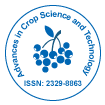Notre groupe organise plus de 3 000 séries de conférences Événements chaque année aux États-Unis, en Europe et en Europe. Asie avec le soutien de 1 000 autres Sociétés scientifiques et publie plus de 700 Open Access Revues qui contiennent plus de 50 000 personnalités éminentes, des scientifiques réputés en tant que membres du comité de rédaction.
Les revues en libre accès gagnent plus de lecteurs et de citations
700 revues et 15 000 000 de lecteurs Chaque revue attire plus de 25 000 lecteurs
Indexé dans
- Indice source CAS (CASSI)
- Index Copernic
- Google Scholar
- Sherpa Roméo
- Accès en ligne à la recherche en environnement (OARE)
- Ouvrir la porte J
- Clés académiques
- JournalTOC
- Accès à la recherche mondiale en ligne sur l'agriculture (AGORA)
- Recherche de référence
- Université Hamdard
- EBSCO AZ
- OCLC-WorldCat
- Direction des chercheurs
- Catalogue en ligne SWB
- Publons
- Euro Pub
Liens utiles
Revues en libre accès
Partager cette page
Abstrait
Creating Drip to Market Agro Corridor (DMAC) for reducing water footprints in agriculture and double Farmers? income through innovative agro marketing model: An analysis on one the World?s Largest Drip Irrigation Project at Ramthal Marol, Karnataka, India
Karuppanchetty Somasundaram and Prabhakar Chini
This paper presents a successful model of micro irrigation with an inbuilt institutional mechanism that ensures knowledge transfer, agronomical support, access to quality inputs and high value market to farmers in arid and semi-arid regions.
The model is being implemented at one of the World’s Largest Drip Irrigation Site in Bagalkot district of Karnataka. It is potentially irrigating 24,000 hectares and benefiting 15,000 farmers. Krishna Bhagya Jal Nigam Limited (KBJNL), one of the Water Corporation of Government of Karnataka conducted a feasibility study on adopting Drip Irrigation and the findings revealed that due to high water use efficiency (WUE) in Drip Irrigation System 12571 Ha can now be irrigated with only 1.43 TMC of water thus saving 1.34TMC of water. The saved water of 1.34 TMC had the potential to double the total irrigated area. This has cut down the cost of future irrigation for KBJNL and helped farmers in almost halving their irrigation cost and labour cost.
In addition, Farmers are organised under Water User Associations’, a community collective that drives the project and trained and equipped as a seller institution to promote collective marketing. Aggregation through Water User Associations enables farmers to directly trade with big buyers eliminating the middlemen thus accruing appreciated price for their produce. Water User Associations are registered as Cooperative Societies and the project envisions creating independent groups in the longer run, which will have the potential to drive larger socio-economic transformation for the region.
Revues par sujet
- Agriculture et Aquaculture
- Biochimie
- Chimie
- Food & Nutrition
- Génétique et biologie moléculaire
- Géologie et sciences de la Terre
- Immunologie et microbiologie
- Ingénierie
- La science des matériaux
- Le physique
- Science générale
- Sciences cliniques
- Sciences environnementales
- Sciences médicales
- Sciences pharmaceutiques
- Sciences sociales et politiques
- Sciences vétérinaires
- Soins infirmiers et soins de santé
Revues cliniques et médicales
- Allaitement
- Anesthésiologie
- Biologie moléculaire
- Cardiologie
- Chirurgie
- Dentisterie
- Dermatologie
- Diabète et endocrinologie
- Gastro-entérologie
- Immunologie
- La génétique
- Maladies infectieuses
- Médecine
- Microbiologie
- Neurologie
- Oncologie
- Ophtalmologie
- Pédiatrie
- Recherche clinique
- Soins de santé
- Toxicologie

 English
English  Spanish
Spanish  Chinese
Chinese  Russian
Russian  German
German  Japanese
Japanese  Portuguese
Portuguese  Hindi
Hindi